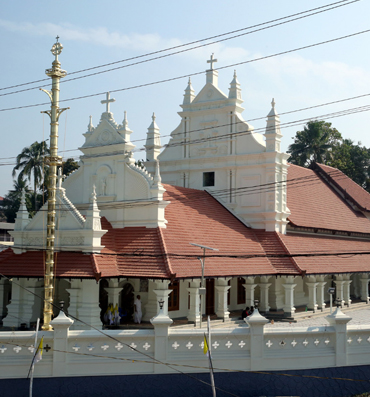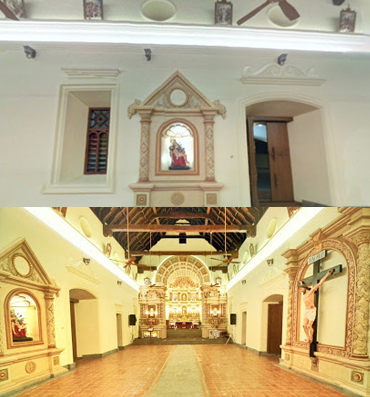It is well well-known that, the Syrian Christians of Kerala undoubtedly possessed a rich oral tradition and Christian accounts about Angamaly were splendidly available by means of folk songs and even in written annals. It is also strong belief that the ancient St. Thomas Christians had developed a life style of their own. The arrival and mission work of East-Syrians in Kerala set off an incomparable faith in tradition, rituals and liturgy. The favourable Geographical features of Angamaly inclined the Persian missionaries to opt this location for their prime campaign centre in 15th and 16th centuries. There were Archdeacons (Head of community) and Bishops resided at Angamaly and ruled native Syrian Christians. Later, the interference of Portuguese missionaries on administration, rituals and liturgical matters etc of the native Syrian Christians blasted into community revolution. The place Angamaly adorned and witnessed as the prime center of prodigious community events steered.
The three ancient big Christian churches within a kilometer, located in a straight street at Angamaly are unique and marvelous in the history of churches. Angamaly was the first Archdiocese of Syrian Christians in India and the jurisdiction under this Archdiocese was extended over the whole of India (metropolitan w-tha rad-kollah hendo) till the end of 16th century. In 1565, Mar Abraham was ordained as the Metropolitan of Angamaly Archdiocese and the East church (Kizhakkepally) was the Cathedral church at that time. In 15th August 1577 foundation stone was laid for new East church (Kizhakkepally). In 1583 Mar Abraham consecrated newly built church in the name of Patron St Abbot Hormizad. In January, 1597, Mar Abraham died and his body was buried in the same church which he built.




